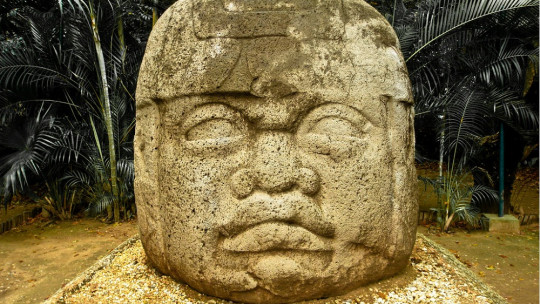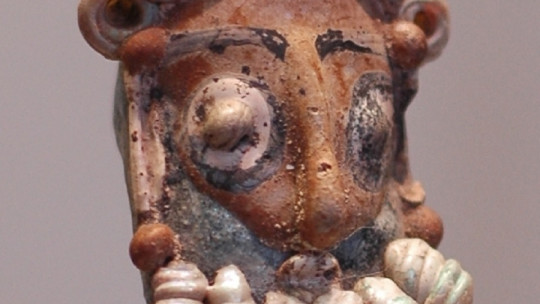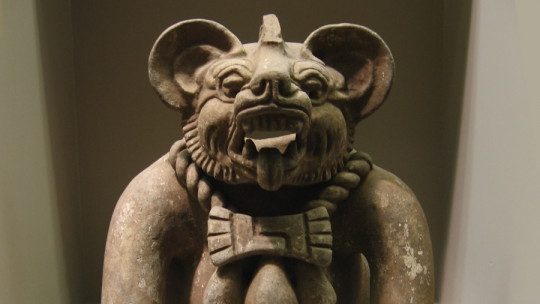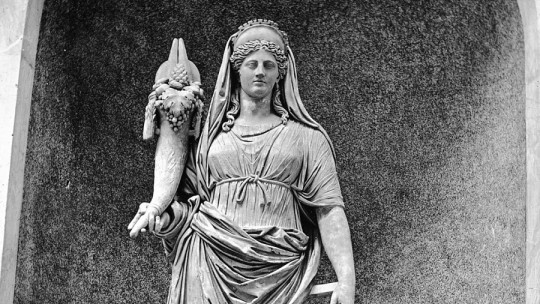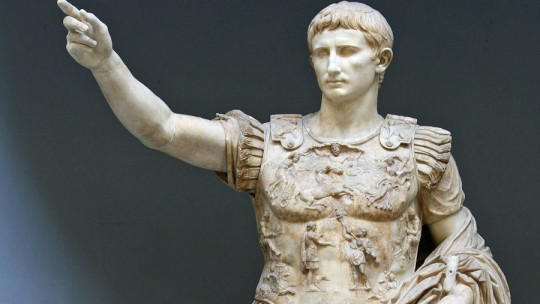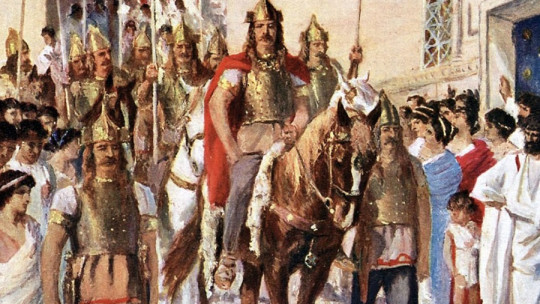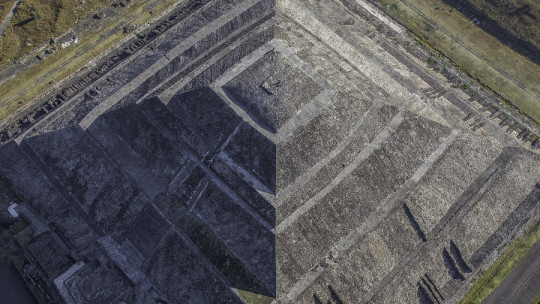
There is a popular saying that says that each continent, at some point in its history, has had its particular Rome, a great city, with an extensive empire, influential and subjugating other peoples.
This is true and, in fact, while Rome was fading, another city on a continent unknown to the Romans was growing until it became a great city: Teotihuacán.
Despite the grandeur of the Teotihuacan culture, of which there is archaeological evidence that it developed as a great civilization, it is still considered a very mysterious Mesoamerican people, about which hardly anything is known. Let’s travel to pre-Columbian Mexican lands and discover who were the teotihuacans
What was the Teotihuacan culture?
The Teotihuacan culture was one of the many civilizations that settled in what is currently Mexico This culture must have existed between the 1st centuries BC and 8th AD, settling especially in the current municipalities of Teotihuacán and San Martín de las Pirámides, about 72 kilometers from Mexico DC This culture has been one of the most extensive on the American continent, being compared very often with Imperial Rome.
Despite the many archaeological remains of this culture, an aura of mystery surrounds this town, whose origins and what led to its disappearance remain an open debate. The sites associated with this culture, especially in its largest city, Teotihuacán, are a great center of anthropological and tourist interest, with its stepped pyramids being very characteristic, which were declared a world heritage site by UNESCO in 1987.
It is known that the Teotihuacan culture It exerted some type of influence on the rest of the neighboring cultures, especially since Teotihuacán was an extensive city and, later, would become a pilgrimage center for later Aztec culture. The Aztecs believed that Teotihuacán, long abandoned, was the place where religious revelations took place.
It is not known what language the Teotihuacanos spoke, since they became extinct long before the arrival of the Spanish and their language could not be documented. In fact, we owe the name Teotihuacán to the Nahuatl spoken by the Aztecs, meaning “place where the gods were born.” According to the Aztec vision, the original settlers of this city had been the quinametzin, a race of giants prior to human existence.
Some theories proposed by linguists and anthropologists consider that the language that this people must have spoken is related to the Otomi, Mazahua, Totonaco, Tepehua or Chocholteco cultures, possibly descending from it or having been strongly influenced by it.
History of this culture
Everything that is known about the Teotihuacans is thanks to archaeological remains. This culture It became extinct long before the arrival of the Spanish to the current territory of Mexico, so little is known about its behavior beyond what can be deduced from what has been seen in Mesoamerican cultures that have survived the passage of centuries. That is why this town is considered one of the most mysterious of all those who inhabited America.
Historians date the beginnings of this culture to the Pre-Hispanic Classic period when the first inhabitants settled in the Valley of Mexico. The first settlers settled in Zohapilco between 5,000 and 3,500 BC and, around 300 BC, the first settlements began to be built in Teotihuacán. Little by little, the population would increase until it fragmented into small villages, reaching a very high point starting in 100 BC, in the Patlachique phase. At this time, Teotihuacán already had about 100,000 inhabitants.
However, anthropologists believe that We have the moment of maximum splendor of the Teotihuacan culture in the year 250 AD, in the Tlamimilolpa phase This people was already a civilization spread throughout Mesoamerica that exerted great influence on the other peoples of the region, in a very similar way to how the Roman Empire did with the peoples bordering its border.
But in the same way that everything that is known has to come down, the Teotihuacan splendor came to an end and a progressive period of decline began. The civilization began a decline in the Metepec phase, around the year 650 AD. It was a slow process that lasted almost 200 years and ended in the Oxtotipac period, considered the end of the Teotihuacan era and its disappearance.
Economy
The Teotihuacan economy was fundamentally agricultural, a trait that can also be seen in other Mesoamerican peoples. Their diet included beans, chili, amaranth, avocado, pumpkin, tomato, corn, peppers and cereals, and they used spices such as oregano, vegetables that they grew on terraces with irrigation systems. They also exchanged all these products, an aspect that was also key to their economy.
It is also believed that they practiced activities such as fruit gathering, hunting and animal husbandry, in addition to the extraction of minerals useful for crafts, architecture or as currency, such as obsidian, clay, basalt and tin. . They also used mud and ground volcanic stone to make their houses, covering them with a layer of lime, although the poorest built their houses with adobe.
Teotihuacan social structure
Teotihuacan society was hierarchical and theocratic At the top of the social pyramid were the priests and nobles who made up the military elite. Under them was a caste of officials and priests with aristocratic lineage in charge of urban and population administration. Finally, at the bottom of society were the farmers, artisans and merchants who, although their activities were fundamental to the economy, were the ones who had the least privileges.
Religion
As we have mentioned, the Teotihuacan culture had a strongly theocratic social structure, that is, religion was an important element in its society. The Teotihuacans were polytheistic, something common with other Mesoamerican peoples, but It is striking that one of its main deities was female: the goddess Spider Woman Among other gods that were worshiped were Quetzalcoatl, the feathered serpent; Tlaloc, the god of rain and sowing; Huehuetéotl, the god of fire; Tezcatlipoca, the god of heaven and earth; and Xipe Totec, who was the god of agriculture.
Religion also regulated the urban structure Most of the buildings of this culture are related to major astrological events, such as eclipses, equinoxes and solstices, which they believed were messages sent by the gods. Thus, they built numerous temples taking into account when these events occurred, in which they could not sacrifice human and animal sacrifices, having the owl, the puma, the eagle and the snake as sacred animals.
Teotihuacán, Mesoamerican Rome
No matter how exaggerated the comparison of Teotihuacán as the Rome of Mesoamerica may seem, the truth is that the population it had at its peak made it larger than the Italian city. This city It was one of the first cities on the American continent and its peak is believed to have occurred between the 3rd and 5th centuries AD, corresponding to the Early Classic period having a population of between 100,000 and 200,000 inhabitants in a city with an area of 21 km².
Although Rome had been a prosperous and populated city, which had reached a million inhabitants centuries ago, at the time when Teotihuacán was in full swing the eternal city was in complete demographic loss. Rome was a shadow of what it had been, with barely 100,000 inhabitants, being surpassed by Cairo (450,000) and Constantinople (500,000) in addition to Teotihuacán itself.
The city progressively lost population around the year 750 AD and it is not well known why. It is speculated that it must have been due to some political crisis, the depletion of resources or some type of war that decimated the population Practically by the 900s AD it was already an abandoned city and had left behind its status as the commercial center of Mexico, although the Aztecs would later use its ruins to transform it into a ritualistic place.

